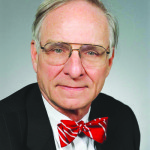 Webster Collins, CBRE/New England
Webster Collins, CBRE/New EnglandWhat we have witnessed these past three years is that Boston is now something bigger. It is bigger than any company. It is a movement. It is part of an unbelievable story. It is looking forward, very fast moving and outpacing Silicon Valley. It is a place where products are being built and customers created. Boston is the place to be.
These were the thoughts of Jason Robins, CEO of Draft Kings and a guest speaker at CBRE/New England’s January 5, 2017 Boston Market Overview.
In this article, I will mimic what I heard on January 5, 2017 and present CBRE/NE’s “draft choices” for reflection on last year as well as to which markets should be watched in 2017. Let there be no mistake, what is going on in Boston is huge.
Basic Economics We have not seen economics as strong in our region in over 30 years. The spin-off Boston’s round-the-clock city structure is causing explosive growth; the blending of education (primarily MIT and Harvard) with technology, automation and culture are part of the cause.
Let’s review market statistics:
• Massachusetts’ unemployment rate is down to 2.9%
• The City of Boston’s unemployment rate is down to 2.6%
• Overall GDP growth rate slumbering along at 2% is expected to increase by 50% to 3% in 2017
• Technology industry is driving demand at over 40% of active tenants in the market today
Out of Market Tech Demand According to CBRE/NE’ Meredith Christensen & Adam Brinch the Urban Boston market projects 500,000 s/f of absorption in 2017 from out-of-market tech demand. This is brought about by market re-invention that is now taking place yearly in real estate. Just look at 2016’s moves; GE to Boston, Reebok to Boston as well as American Test Kitchen, AutoDesk, Red Hat, Optum and Fuze. Over 40% of tenants actively looking for space associate themselves as a “Tech” company (up from 5% just five years ago.) Technology demand is also expanding as companies recategorize themselves in the market as a derivative of “tech” as follows…
Fidelity = FinTech;
Optum = MedTech;
Reebok = FitTech;
LEGO = EdTech;
WeWork = Property Tech
Organic Growth Adam Brinch outlined that Organic Growth among major technology and life science heavy weights continues to be a significant trend in Cambridge. In 2016, there are 10 companies with a combined market cap of $1.8 trillion that expanded to the Cambridge area. The suburbs have also benefited from strong organic growth as over 50% of the deals in 2016 (totaling 2.7 million s/f) included some form of organic growth.
New Development Cambridge is the location of choice. Over the past nine years, Cambridge has grown at a 22% rate of growth from 19.8 to 24.1 million s/f of space. During the same time frame, vacancy has dropped from 8.9% to 3.2%. Looking ahead to 2017 and beyond, new development projects will be a player to watch. Currently, 16 new projects of 4.4 million s/f are on the drawing boards with 1.2 million s/f permitted and 1.6 million s/f now shovel ready.
VIBE Drives Velocity VIBE, as defined by Meredith Christensen consists of (Vibrant Neighborhoods, Innovative Design, Bold Amenities and Entrepreneurial Ecosystem). Players in the market are looking for something different. 888 Boylston St. just opened featuring 14’ high-glass light entering from the north and views of the Tesla Automobile from Boylston St. 115 Winthrop Sq. promises a similar impact. These projects all entail a sense of integration with their surrounding neighborhoods in addition to innovative design, bold amenities and an entrepreneurial ecosystem.
The Redefinition of Lab In the suburbs, demand for lab space is outperforming supply by a factor of two and a half to one. Huge growth has taken place in the suburbs which has had 35% growth in one year with 50% of tenants coming from Cambridge. This ties into life science, CBRE/NE’s #6 pick, which has one MSF of positive absorption in 2016.
Industrial Leads the Pack Industrial is back in all shapes and sizes, with a 6% vacancy rate and 18% rent growth in 2016. Further, there is a revitalized pattern of cross-migration. Industrial/flex land is now $3 - $4 million per acre on the outer edges of Boston.
A Generational Shift A new generation has now entered the market. Millennials now average 26 years of age. They are socially conscious, self-centered, big dreamers, impatient and urban. They are now followed by generation Z (60 million strong and 25% of the future population), born 1996 to 2010 who are financially conservative, responsible, and suburban. This is where the suburban growth will come from as Gen Z has a higher attraction to live in the suburbs.
Lab Redefined = A New Breed of “tech/lab” The tech and life sciences markets are on fire in Kendall Sq. The practical reality of a hands-on marketplace is what is driving the real estate world beyond anything ever seen before.
Meredith Christensen, on our Downtown team states that, “there is clearly no shortage of downtown owners exploring ways to transform their office buildings in to the sort of facilities that can accommodate biotech and pharma tenants looking for wet lab space.” Adam Brinch, from our Urban Cambridge group also notes, “With Cambridge lab demand currently floating around 2 million s/f of active requirements, demand is outpacing available supply by more than two and half to one.” Many outcomes can be taken away from our Boston review, leading with the notion that a new breed of “Tech” tenant is on the rise and in dire need of inventory for lab space.
Webster Collins, MAI, CRE, FRICS is an executive vice president/partner with CBRE|New England, Boston.








